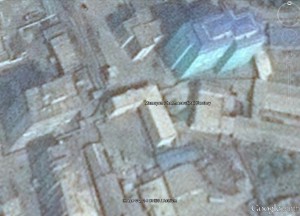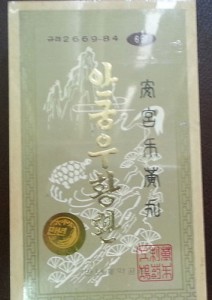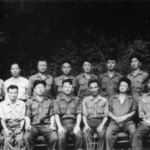Asia Times
Bertil Lintner
10/31/2007
North Korean Premier Kim Yong-il is scheduled to pay a four-day visit to Cambodia in early November, underscoring the curious close relationship between one of the world’s last communist dictatorships and one of Asia’s most ancient monarchies.
Kim Yong-il, who should not be confused with the North Korean supremo, “Dear Leader” Kim Jong-il or any of his relatives, will hold talks with Cambodia’s retired king Norodom Sihanouk, the Cambodian Foreign Ministry said in a statement posted on its website.
The North Korean premier will also hold “official talks” with his Cambodian counterpart Hun Sen, and “pay courtesy calls” on Senate president Chea Sim, and the president of the National Assembly, Heng Samrin, according to the statement.
Cambodia has long served as a link between North Korea and Southeast Asia and beyond, so it is plausible to assume that trade and related issues will be on the agenda. For years the two countries ran a joint shipping company, and before the China-led six party talks, Cambodia had offered to mediate over Pyongyang’s contentious nuclear program.
Kim Yong-il’s visit to Cambodia is not the first by a North Korean dignitary in recent years. Kim Yong-nam, president of North Korea’s rubber-stamp parliament, the Supreme People’s Assembly, also visited the country in 2001 at the invitation of Sihanouk, who had then not yet abdicated in favor of his son, Norodom Sihamoni, the current serving monarch.
Kim Yong-nam now functions as de facto head of state, as Kim Jong-il’s father, “Great Leader” Kim Il-sung was elevated to the position of “eternal president” before his death in 1994, making North Korea not a monarchy, but rather the world’s only necrocracy.
As incongruous as it may seem, Cambodia is North Korea’s oldest ally in Southeast Asia. It all began when Sihanouk met Kim Il-sung in 1961 at a Non-Aligned Movement meeting in Belgrade and a personal friendship developed between the two leaders. When Sihanouk was ousted in a coup in 1970, Kim Il-sung not only offered him sanctuary in North Korea but also had a new home built for him about an hour’s drive north of Pyongyang.
A battalion of North Korean troops worked full-time on it for almost a year, and when it was finished, only specially selected guards were allowed anywhere near the 60-room palatial residence. Overlooking the scenic Chhang Sou On Lake and surrounded by mountains, the Korean-style building even had its own indoor movie theater. Like the Great Leader’s son, Kim Jong-il, Sihanouk loves movies.
Sihanouk has both directed and acted in his own romantic feature movies and a few more were made in North Korea, with Cambodian actors strutting their stuff against the backdrop of Korea’s snow-capped mountains.
French wines and gourmet food were flown in via China, and Sihanouk and his entourage were treated as royals would have been in any country that respects monarchy – as North Korea evidently does.
By contrast, North Korea has maintained less cordial relations with neighboring communist Vietnam, which still exerts behind-the-scenes pressure on Cambodia. Kim Yong-il will nonetheless also visit Hanoi during his diplomatic tour of Southeast Asia.
Throughout the Vietnamese occupation of Cambodia, North Korea refused to recognize the regime that Hanoi installed in Phnom Penh in January 1979 – and that despite immense pressure at the time put on Pyongyang from Moscow. During a meeting between Kim Il-sung and Sihanouk seven years later on April 10, 1986, in Pyongyang, the Great Leader reassured the then prince that North Korea would continue to regard him as Cambodia’s legitimate head of state.
When Sihanouk returned to Phnom Penh in September 1993, after United Nations-led mediation to end Cambodia’s civil conflict, he arrived with 35 North Korean bodyguards, commanded by a general from Kim Il-sung’s presidential guards. They are still there, now guarding Sihanouk as well as the new king, Sihanomi, who is not as close to North Korea as his father, but has paid at least one visit to Pyongyang.
Sailing buddies
Sihanouk and the Cambodian royals showed their gratitude to the North Koreans when in the late 1990s they set up a privately-owned shipping registry, the Cambodia Shipping Corporation (CSC). The flag of convenience was used by the North Koreans, and it enjoyed royal protection as it was headed by Khek Vandy, the husband of Sihanouk’s eldest daughter, Boupha Devi.
CSC was also partly owned by a Phnom Penh-based North Korean diplomat and for a few years aggressively marketed itself as a cheap and efficient “flag of convenience” service for international shippers. A series of embarrassing maritime incidents, including the interception in June 2002 of a Cambodian-registered – though not North Korean owned – ship by the French navy, in a joint operation with US, Greek and Spanish authorities, of a massive haul of cocaine off the West African coast prompted Hun Sen’s government to cancel CSC’s concession and reportedly give it to a South Korean company, the Cosmos Group.
At the time, International Transport Federation general secretary David Cockroft told the Cambodia-based fortnightly newspaper the Phnom Penh Post that “they’ll need to be able to walk on water, because nothing short of a miracle will clean up the name of Cambodian shipping”. Indeed, little appeared to change, including North Korea’s use of Cambodia’s flag of convenience for controversial shipments.
In December 2002, a Cambodian-registered, North Korean-owned ship named So San was intercepted by Spanish marines, working on a US tip, in the Arabian Sea. It was found to be carrying 15 Scud-type missiles, 15 conventional warheads, 23 tanks of nitric acid rocket propellant and 85 drums of unidentified chemicals under a cargo of cement bags.
The destination of the weaponry was said to be Yemen, and following protests from both Yemen and North Korea – and intervention by the US, which apparently did not want to antagonize Yemen, a supposed ally in Washington’s “war on terror” – the ship was allowed to continue to Yemen. Later revelations indicated that the cargo was ultimately delivered to Libya, which caused considerable embarrassment in Washington.
Premier Kim Yong-il is likely to be quite familiar with the CSC, as he served as minister for land and marine transport from 1994 until the Supreme People’s Assembly appointed him to the premiership in April this year. But since the scandal-ridden CSC was reorganized five years ago, Cambodia’s economic importance to Pyongyang would appear to have waned, and North Korea’s only known activity in the country today is in the restaurant business, including eateries in Phnom Penh and Siem Reap.
Yet as a diplomatic link to the wider region, Cambodia is still important to North Korea. In April 2003, the Cambodian government, at the urging of Sihanouk, had plans to send an envoy to Pyongyang in a bid to persuade the North Korean leadership to be more flexible about talks on its nuclear program, which at that time had stalled.
The mission never materialized, but North Korea no doubt remembers that its trusted ally Cambodia tried first to mediate – and that Phnom Penh in future could still serve as a gateway for improved contacts with the outside world. It remains to be seen what message Kim Yong-il will bring to Phnom Penh, but it is reasonable to assume that his visit will, despite the official announcements, be confined merely to “courtesy calls” and royal audiences.
Bertil Lintner is a former correspondent with the Far Eastern Economic Review and the author of Great Leader, Dear Leader: Demystifying North Korea under the Kim Clan. He is currently a writer with Asia-Pacific Media Services.



